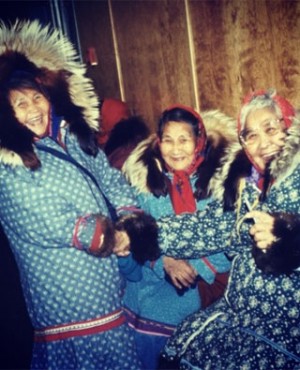
Whitehorse – Reaching the vast areas of the northern Yukon and Northwest Territories in Canada and the northeast Alaska in the United States, the Gwich’in people have survived throughout the years. Based on conventional belief, their communities have occupied the said territories for as long as 20,000 years. Before the 1870s, they were known to follow a nomadic lifestyle, with their traditions largely based on their main source of food, tools, and clothing.
“People of the Caribou”
Alaska and northwest Canada are home to roughly 7,000 Gwich’in. With the unique climate and landscape of their lands, the people are deeply rooted in their traditional practices, which have been molded throughout the years to facilitate the ethnic group’s survival.
The name Gwich’in has several meanings. These vary according to the location or practices of a particular northern group. The translations may also be affected by the way of life or the beliefs of a particular community. Nevertheless, the majority of these definitions translates to “people of the caribou.” This is a unique yet appropriate term for the people, as they rely largely on this mammal for sustenance. The caribou, commonly known as reindeer, has always been a part of their way of life, both culturally and economically. Nevertheless, they also gather smaller mammals, fish, and birds in their respective territories. In addition, the group’s cultural practices are deeply rooted in the spiritual aspect. They even have stories that describe their peaceful intimacy with all animals.
Language and Modern Times
The Gwich’in language is part of the Athabaskan language family. There are two main dialects, namely, the eastern and the western, although they can barely be distinguished. The differences are mainly observed at the United States–Canada border. These differences are evident enough such that the people within the villages use unique dialects, expressions, and idioms.
However, according to the UNESCO, the language of the Gwich’in is now considered as a “severely endangered” one. The number of fluent speakers have gone down to less than 150 in Alaska and around 250 in northwest Canada. These are extremely low numbers compared to the group’s population. Unfortunately, the members of the tribe could not easily stop this decline, as their practices and interactions are also affected by their integration into modern society.
Despite this pressing problem, a number of plans and projects are underway to help revitalize the language of the ethnic group. Researchers, academicians, and other project leaders are working on documenting the language as well as enhancing the writing and translation skills of the younger Gwich’in speakers. Moreover, as the Gwich’ins are closely connected with the caribou, there are some programs wherein the main researchers document their traditional knowledge of the caribou anatomy. Hopefully, through these initiatives, the language can survive and at the same time be re-introduced to other communities because this is an essential feature that holds the history and ideals of the ethnic group.
Gwich’in Tribal Council, https://www.instagram.com/gwichintribalcouncil/



